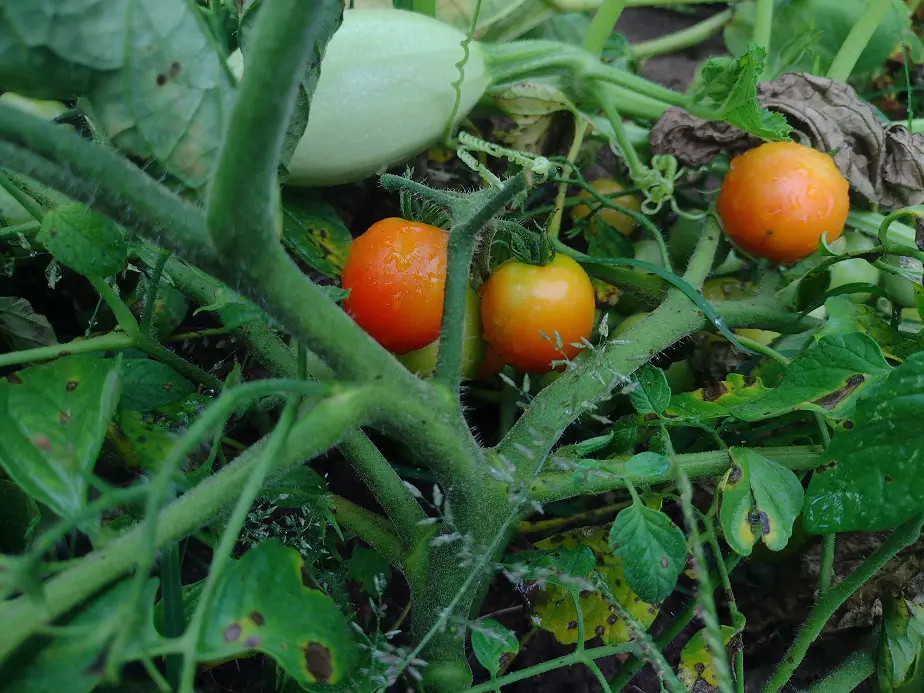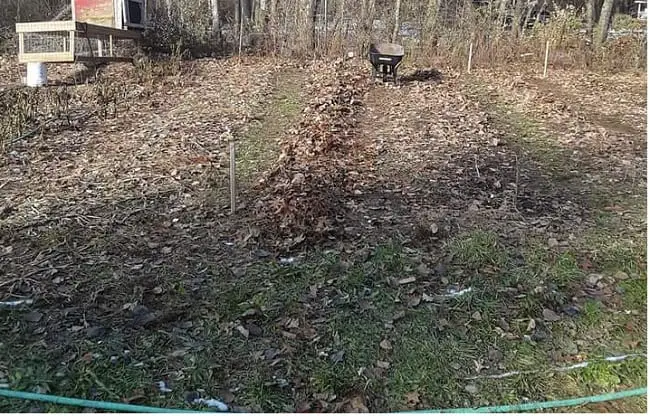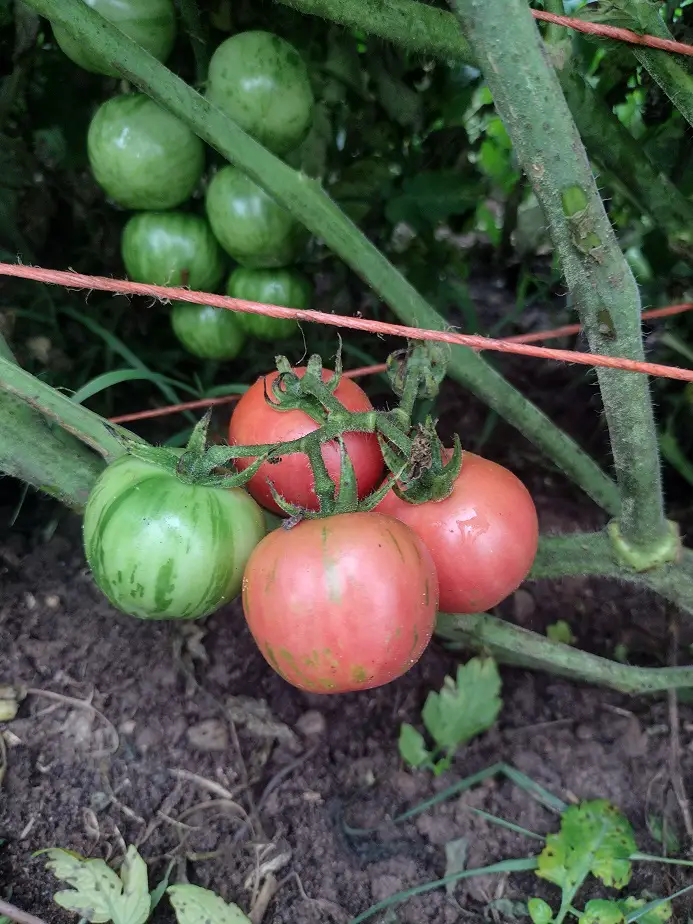Tomatoes are my all-time favorite plant to grow. I’ve grown dozens of varieties and one of my favorites is the compact Betalux tomato.
A soil pH of 6.6 is optimal for growing tomatoes in most conditions. Soil with a pH valve under 6.5 will cause tomatoes to have a deficiency in Calcium, Phosphorus, and Magnesium. A pH over 7.0 will have too little Iron and Phosphorus for healthy, vigorous tomato plants.
There’s the answer plain and simple, but there’s a lot more to it. Below, I will show you how pH affects the soil and the plant. I will also explain how soil pH works and how to change it without chemicals.

pH for Tomatoes
you probably remember from school that pH is a measure of either acidity or alkalinity. pH is a measure of how much hydrogen is in something. Hydrogen has a lot of weird actions on soil, particularly the minerals in it. Less hydrogen makes acid, more hydrogen makes alkaline.
Minerals all interact with hydrogen differently, and they have different properties at different pH values. Improper pH for tomatoes is when the nutrients in the soil are not available to a plant’s roots due to the action of hydrogen. One mineral to rule them all.
Hydrogen has an uncanny tendency to form ionic bonds with other minerals in the soil. Different values of hydrogen in the soil create different ionic bonds with different elements. It “ties up” most of the minerals a plant needs at one point or another.
The great thing is that there is one spot on the pH scale that is fairly well balanced for the mineral needs of all plants, including tomatoes. That’s somewhere near 7.0 for just about everything. For tomatoes, it’s always somewhere between 6.5 and 7.0. Generally speaking, 6.6 is perfect for the mineral needs of tomatoes.
Here is a chart of all minerals a tomato plant craves, and the effects different pH levels have on the availability of these minerals in the soil. Remember, certain pH soil will “tie up” these minerals so the plant can’t absorb them. Here’s how much of these fertilizing minerals are available to a tomato plant.
*The red letters indicate optimal levels for desirable tomato plant growth and fruit development.
| pH level | 6 | 6.5 | 7 | 7.5 | 8 |
| Mineral/ availability in soil | |||||
| Nitrogen | decent | high | high | high | high |
| Phosphorus | moderate | decent | high | low | Very low |
| Potassium | high | high | high | high | high |
| Calcium | Very low | low | moderate | decent | high |
| Iron | high | decent | moderate | low | Very low |
| Magnesium | moderate | decent | high | high | high |
| Molybdenum | moderate | decent | high | high | high |
I did not add everything in this list, because some minerals are not affected at all within the pH range of 6.0 to 8.0, much like we see with the levels of Potassium. There’s no sense in making a bigger chart with useless information.

I spent way too long researching tomatoes this past summer, so here’s a list of all the necessary minerals for a tomato plant’s life cycle, in order of greatest, to least amounts needed; as well as their primary functions within the tomato plant.
| Mineral | What it does for Tomatoes |
| Nitrogen (N) | Necessary for the synthesis of plant proteins (all major growth) |
| Phosphorus (P) | Required for cellular division and Mitochondrion creation |
| Potassium (K) | Controls plant enzymes, transport sugars (energy), reduces disease susception |
| Calcium (Ca) | Strengthening cell walls, thus supporting disease immunity |
| Sulphur (S) | Production of essential amino acids, cystin and methionine |
| Magnesium (Mg) | Main part of Chlorophyll molecules |
| Iron (Fe) | Production of Chlorophyll |
| Manganese (Mn) | Required for the Photosynthesis process |
| Boron (B) | Transportation of sugars (energy), a component of cell walls, helps pollination. |
| Zinc (Zn) | Synthesizing auxins |
| Copper (Cu) | Influences metabolism of Nitrogen and carbohydrates (energy i.e., sugars) |
| Molybdenum (Mo) | Component of essential tomato plant enzymes |

Soil pH for the Sweetest Tomatoes
This one is fun but tricky to really discuss very well. I’ve done some of my own testings, as well as going over every piece of published literature about this I can find. I do have some ideas, but no conclusions. I read a while ago from a tomato growing guru, that he concluded a pH of 6.8 was best for sweetness.
At least, that’s what he thought, based on his decades of soil tests and tomato tasting. Not exactly conclusive to say the least. But I think I concur with his self-established notion. Most of my tomato growing beds are 6.6 pH, save one. My sweetest tomatoes (same variety) came from a 6.8 pH soil.
Now, they weren’t sweeter by much, but it seemed noticeable. I have a hunch as to why too. the only thing I can come up with is Calcium. With the 0.2 increase in pH, more of the calcium in the soil becomes freed and is absorbable to the plant’s root system.
I’m not sure just why calcium would make a difference except for how it helps to form and firm the cellular structure of tomato plants. Most tomato growers know that the plants always seem to benefit from a slight increase in calcium to strengthen the plant.
Calcium builds strong cell walls helps to reduce plant damage. Damage doesn’t just hurt the plant; it allows various diseases a chance to enter and infect your happy little plants. Just like when you get broken skin, it’s a chance for infection. It does seem to help.
I think a bit of extra calcium lets your plants focus on being tomatoes instead of fighting diseases. conversely, you can just add a bit of calcium, like eggshells, to your soil. Then you won’t have to change your pH from 6.6 to 6.8 and tie up extra Iron. No, just add some crushed eggshells to the soil.
Preventing Tomato Blossom End Rot with Soil pH
This one is very valuable. Blossom end rot is the number two destroyer of home tomato crops. Blossom end rot is when the blossom end (bottom) of a tomato gets damaged and turns brown and squishy. Remember how we strengthen cell walls to resist damage? Yes, Calcium!
Calcium deficiency causes a tomato to undergo blossom end rot. Remember how calcium becomes unavailable to plants at under 6.0 pH? If your soil is in the 5’s, or even 6.0, you will probably have a bad case of blossom end rot on your tomatoes just because half or more of the calcium in the soil is tied up.
Besides eggshells, Calcium Carbonate, Calcium Sulfate, and Chelated Calcium are good sources of calcium for your soil. Sure, if your soil is a bit low on the pH scale, add calcium for your tomatoes. But, it’s better to simply change the pH of your soil. That’s not a hard task, really.
Now, it’s more than just that. Most instances of blossom end rot, although techniclly from calcium definciency, are set in motion by drought or uneven watering. If the soil has calcium, and most does, a shortage of water will cause a calcuim definciency in the plant.
So, yes add some calcium. Your plants use up calcuim every year so it’s good to put it back in. BUt, the first and most importnt thing is giving a plant enough water so that it doesn’t experiance drough symptoms.

Do I need to Change Soil pH for Tomatoes?
You should work to change or buffer the pH if your soil falls outside of 6.3-7.3. Yuo can bring the pH closer to 7 by adding organic matter to the soil. That will work to buffer the pH, and will increase the nutrient holding capacity of he soil.
If your soil is 7.5, you may get by adding extra Phosphorus and Iron. If your soil is 6.0, you will may want to add a little everything. Of course, the mineral content in the soil isn’t the same everywhere. You should do a complete soil test to show you not only the pH, but also the levels of all necessary minerals plants need to grow.
Also, testing suggests the Vitamin-C in tomatoes is highest when grown at a pH of 6.0, so if your goal is preventing scurvy, there you go!

Long-Term Fix for Tomato Soil pH
Garden centers all sell soil additives, called amendments, to physically alter the pH of a batch of soil. Most common is agricultural lime to raise the pH, and sulfur to lower it. The purpose of agricultural lime is basically to water down the hydrogen in the soil. Lime works to counteract the hydrogen’s effect.
Sulfur doesn’t actually change anything by itself. Sulfur indirectly affects the pH by influencing certain microbiological activities in the soil. An excess of Sulphur tends to cause a bloom of a certain microorganism that in turn, releases hydrogen from the soil, lowering pH in the process.
Talk about strange! But hey, nature is strange. Have corrected my own soil pH levels. I changed my pH by 0.5 in about a year. That’s usually the most you want to do in a year. You can do more, but it will be very hard on any plants growing in the soil at the time. After application, it takes up to a year to have full effect.
Organic matter changes the ionic makeup of the soil by either releasing positively charged hydrogen into alkaline soil or by removing positively charged hydrogen particles in acidic soils, causing a buffering effect on pH. Organic material pushes soil pH toward neutrality.
That’s exactly what did I brought up the organic matter from half a percent to four percent in a year by incorporating a small mountain of leaf mold and manure. As long as I keep the organic content between five and four percent the soil in my garden should stay right around 6.6 or 6.7. Yours may be different.
By having a closer to neutral (pH 7.0) soil, you will have a much more alive soil web. There are much more helpful and beneficial organisms in the soil when it is closer to neutral. there will also be a great deal more by adding proper amounts of organic matter.
Organic matter serves as food for the microbes, and absorbs necessary water in the soil, keeping the dirt from drying out. Moist soil also encourages more microbial activity beneath the surface. Organic matter is the key to a sustaining and healthy garden system. Too bad it’s often ignored.
Related Articles:

